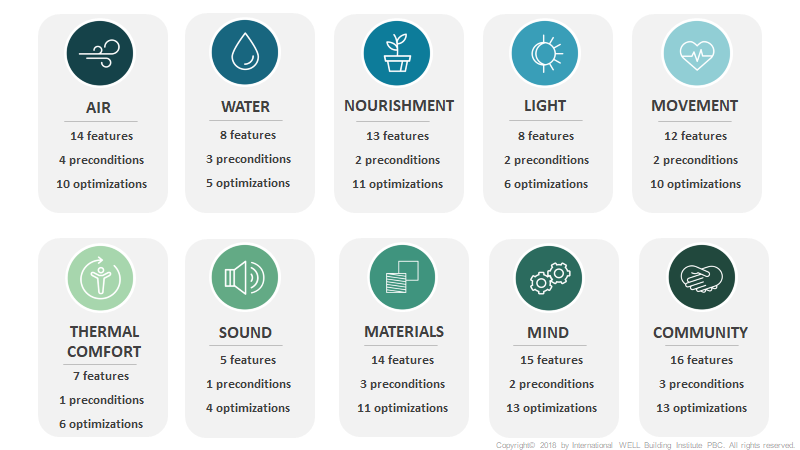Thoughts on Becoming WELL
As designers, it’s as much our job to educate our clients as it is to design for them. However, with the urgency of climate change and the current global pandemic threat, we’ve gone from educator to lobbyist. In the process of any project, there are thousands of decisions to be made and each one comes with consequences to our environment and to the people who live in, work in and use these spaces.
As an interior designer, I show up each day with the understanding that people spend more than 90 percent of their day in an interior environment. We wake up in an interior environment, we shuttle ourselves around in mobile interiors and most of us work in interior environments. Interior design, as a profession, has an immense potential for impact – positively or negatively.
For the last 10+ years my LEED training and experience has helped shape designs and specifications with great impact, but the more recent WELL Building Standard has captured my professional interest with its direct focus on the impact of the interior environment to its user.
The International WELL Building Institute (IWBI) developed a human-centered design benchmarking tool stemming from evidence-based scientific and medical research. In order for a building to become WELL Building Certified, it has to pass a series of tests in ten areas: Air, Water, Nutrition, Light, Sound, Community, Movement, Materials, Thermal Comfort and Mind—and it must retest again in three years to maintain the accreditation. That means the WELL Certification requires a thorough commitment to creating and maintaining a healthful place where people can thrive.

Like LEED in its early years, many of our clients aren't yet ready to invest in a complete adoption of the IWBI standards, but certifications are growing. WELL certified buildings have shown improvements in cognitive and work performance, patient recovery, test scores, quality of sleep, and generally healthier and more fit inhabitants. With tangible ROI like these and the increasing emphasis from the design industry in post-occupational performance; I expect that WELL and IWBI will soon be a household name.
As a WELL Building Certified designer, I feel a responsibility similar to a health professional – to do no harm. Regardless of whether a client is ready to invest in WELL certification or even registration at this time, each project is a chance to make a case for holistic, human-centered spaces. My inclination as a designer has forever shifted to create spaces that support long-term health and wellness. As designers, it is important that we go beyond aesthetics and into the science and metrics of how interior environments impact each of us and those we seek to serve through design.
Looking down the road for our higher education clients, as enrollment numbers begin their anticipated drop and competition for students intensifies and as we deal with other unforeseen consequences related to the Coronavirus pandemic; these healthful qualities in student housing, dining and academic buildings become assurances to cautious parents of the safe and healthy environments where students are able to perform at their best ability. An affiliation with IWBI may help tip the scales in their institution's favor.
